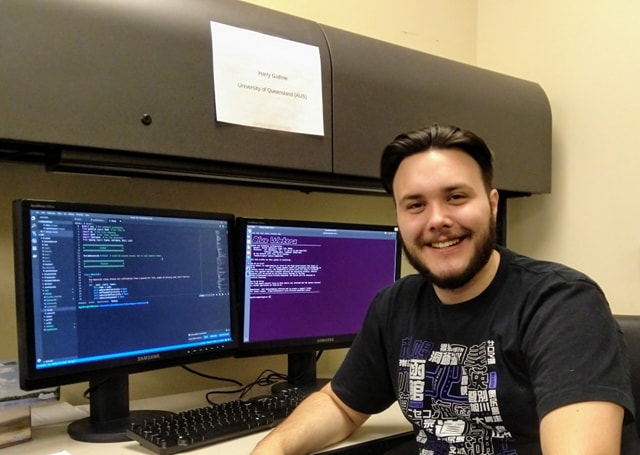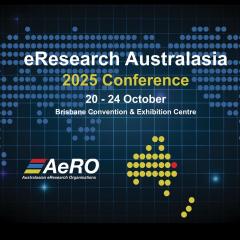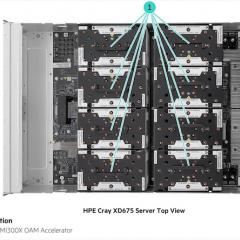
Harry Guthrie at NCSA.
By Harry Guthrie
UQ software engineering student Harry Guthrie reports on his internship in January and February this year at the US National Centre for Supercomputing Applications (NCSA), located at the University of Illinois. He worked on NCSA’s Crops in Silico project. The internship was part of the RCC-sponsored Queensland Undergraduate Research Projects Abroad (QURPA) program. Harry is an undergraduate student currently in his fourth year within UQ’s School of Information Technology and Electrical Engineering. Edward Dann, an undergraduate student from Monash University, joined Harry at NCSA as part of MURPA, Monash’s equivalent to QURPA.
My research at NCSA was focused on bee behavioural simulations, attempting to replicate real world experiments demonstrating bee behavior given particular stimuli. In addition to this, the LSystem plant modelling framework, LPFG, was used to produce realistic plants to be used as visual stimuli for the bees. This research is important as it will help determine the best conditions for bees to thrive in greenhouses alongside crops they will be pollinating.
After developing a working prototype, the bee simulations were run on NCSA’s Blue Waters supercomputer.
The final step involved taking data generated by the simulation to answer research questions around bee behavior.
The simulation results included two main pieces of information: firstly, the flight path of each bee; secondly, the time at which a bee pollinates a flower.
This information was used to produce visualisations that demonstrated how bees move and behave.
During the project, significant issues were encountered in terms of computation time required to accurately render even a single complex plant. In the end, the bees were simulated using simple shapes and later complex shapes were substituted for visualisations.
Creating the tagged geometry, involving identifying each part of the plant and assigning it a unique identifier, also proved to be an interesting challenge due to the available information provided by the LPFG framework.
Edward Dann and I made use of some of the NCSA tools available to us, such as the Crops in Silico framework, which involved us making a proof of concept of connecting the LPFG modelling system with a ray tracer and bee model.
NCSA’s Crops in Silico team were incredibly helpful with facilitating resources and providing technical insight into components of the project. Crops in Silico co-director Dr Matthew Turk readily fielded questions on different techniques when modelling the 3D environment and how to best analyse it. And graduate student Colleen Heinemann was essential for getting the ray tracer up and running in a very short timeframe, considering we had to make significant changes to how the underlying ray tracer was required to behave, such as modelling the additional colour spectra required.
Outside of the project, the QURPA trip provided me with a series of firsts: first trip abroad alone, first trip to the United States, and first experience of temperatures that almost reached -50℃ during a polar vortex. I was fortunate enough to also sightsee in nearby Chicago and Washington D.C., which both impressed me with their size and history.
I would like to thank my supervisors, Associate Professor Jim Hanan at UQ’s Queensland Alliance for Agriculture and Food Innovation (QAAFI) and Professor David Abramson at RCC, for their support and assistance in making this opportunity possible and for trusting me enough to send me halfway around the world to work on a cutting-edge project.
I would also like to thank my support at NCSA, Jay, Matt, Colleen, Megan and others, who patiently assisted with my often obscure questions, and also my project partner, Edward — at times it was very stressful trying to produce to the best of our abilities and I am thankful for the patience and support he provided me over the two months.
This project was a once-in-a-lifetime opportunity, and I am humbled to have been given the chance to work at a completely unprecedented scale.



